|
|
|
HTPI: Documentation for LMO-FFPs (Article
18.2(a)):
|
|
|
|

|

|
|
|
|
|
Ethiopia, on behalf of the AFRICAN GROUP, said the
Chair’s text was unsatisfactory, and called for basing
discussions on Decision BS-I/6 (HTPI) and stressed the need for
“zero tolerance” for unapproved LMOs in commodity
shipments. Above photo L-R: Lilian Nfor (Cameroon) in
consultation with Tewolde Egziabher (Ethiopia)
|
The EUROPEAN COMMISSION called for including in documentation
the
LMO’s common, scientific and commercial names and its unique
identifier,
and supported allowing importing Parties to decide whether to receive
the information in commercial invoices or in a stand-alone
document.
Above photo L-R: Nicola Notaro and Soledad Blanco (EC)
|
|
|
|
|
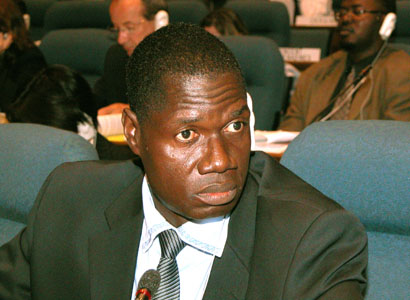
|
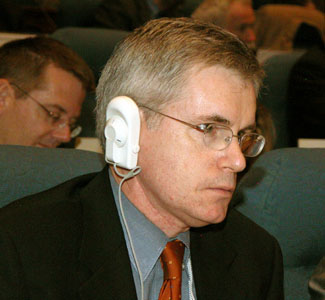
|
|
LIBERIA urged all Parties to reassess their positions
for compromise and, with many others, supported the establishment of
a contact group to further consider the issue.
Above photo: Johansen Voker (Liberia)
|
CANADA said the Chair’s text
reflects an important step forward that is
inclusive and accommodating for all countries as exporters and
importers,
and builds on Decision BS-I/6 to provide a starting point for
an implementable decision. Above photo: Stephen Yarrow (Canada)
|
|
|
|
|
|
|
|
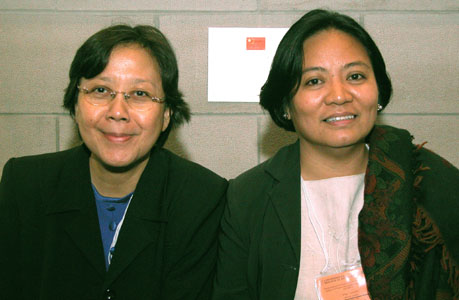
|
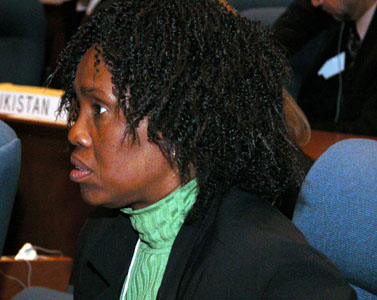
|
|
INDONESIA said that identification
requirements should not affect domestic regulation. Above photo L-R: Utami
Andayani (Indonesia) with Amparo Ampil ( The Philippines)
|
SOUTH AFRICA offered to share its experience with the shipment
of LMOs.
Above photo: Maria Mbengashe (South Africa)
|
|
|
|
|
|
OTHER SCIENTIFIC AND
TECHNICAL ISSUES:
|
|
|
|
|
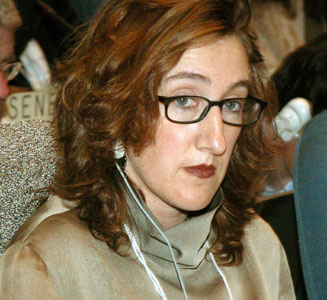
|
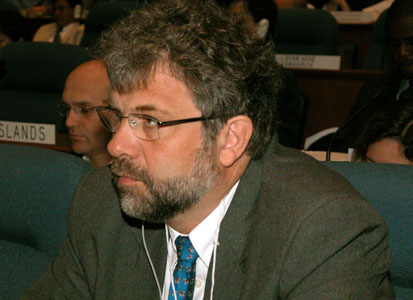
|
|
NEW ZEALAND
stressed that the Protocol does not, and should not, exempt LMO
veterinary medicines from the advance informed agreement procedure or
documentation requirements at this stage. She noted that Parties
could initially use the simplified procedure of Article 13 to exempt
LMO veterinary products that meet their requirements and, once a
number of Parties have agreed on similar products to be exempted, the
issue of excluding them could then be raised at the MOP. Above photo:
Jane Coombs (New Zealand)
|
SWITZERLAND asked for guidance on the status of documentation
requirements for LMOs that are veterinary products not intended
for
introduction into the environment.
Above photo: François Pythoud (Switzerland)
|
|
|
|
|
|
|
WORKING GROUP II
|
|
|
NOTIFICATION REQUIREMENTS:
|
|
|
|
|
|
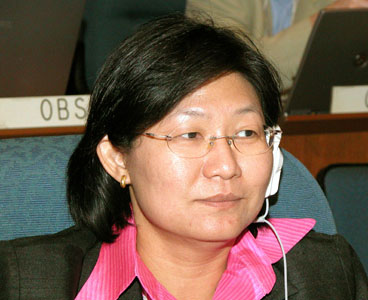
|

|
|
THAILAND suggested
keeping the issue of notification requirements under review pending
submission of interim national reports.
Above photo: Vanida Khumnirdpetch (Thailand)
|
The PUBLIC RESEARCH AND REGULATION INITIATIVE suggested
notification reflect the low risk level of confined small-scale field
trials.
Above photo: Jesse Machuka (Public Research and Regulation
Initiative)
|
|
|
|
|
|
|
|
|
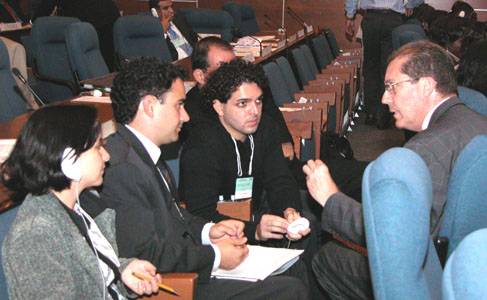
|

|
|
BRAZIL opposed a
reference to penalties for infringing notification
requirements.
Above photo: Brazilian delegates in consultation.
|
CUBA called for language on the sovereign rights of
transit States in
the operative part of the decision.
Above photo: Hector Conde (Cuba)
|
|
|
|
|
CONTACT GROUP:
|
|
|
|
|
|
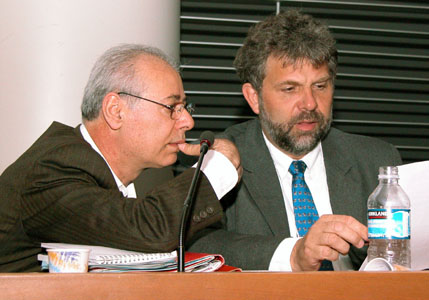
|

|
|
Above photos
L-R: Contact Group Co-Chairs Nematollah
Khansari (Iran) and François Pythoud (Switzerland) reviewing
text on documentation
requirements for LMO-FFPs; attentive participants in the contact group
session.
|
|
|
|
|
|
|
|

|
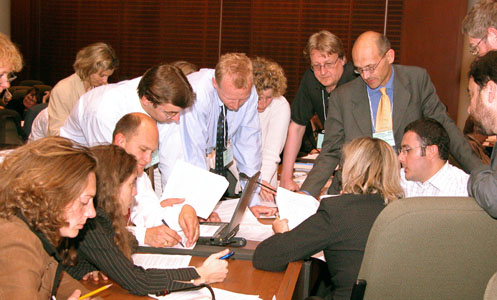
|
|
Above photo L-R: Mexican
delegates Elleli Huerta, Fran Acevedo, Amanda Galvez, and José Luis
Flores reviewing the Co-Chairs' text prepared during a short
dinner break.
|
Above photo: Delegates from the EU reviewing the Co-Chairs' text.
|
|
|
|
|
|
|